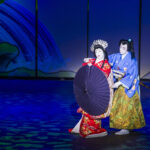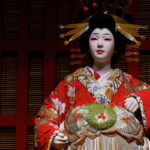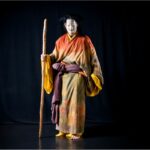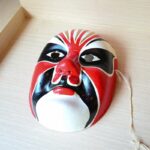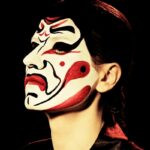Kabuki is a type of Japanese theater that is well-known for its glamorous costumes and heavily-stylized performances. As a traditional Japanese style of dance-drama, it is known to have originated in the early Edo period.
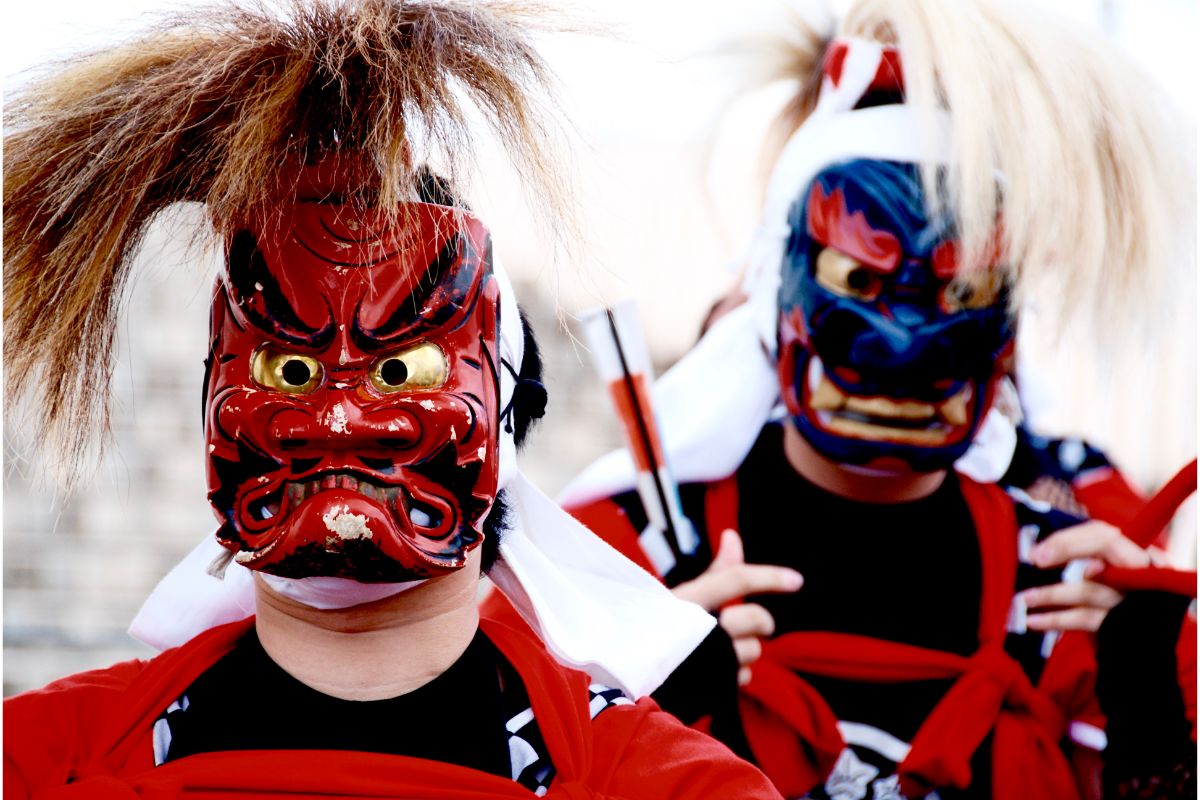
A few things have changed since then yet it remains popular. If you can, try to catch a performance but do note that a traditional kabuki theater performance should only feature male performers.
In this guide, we will look at the cultural significance of kabuki theater. Specifically, its Japanese heritage and influence.
The Japanese Heritage Of Kabuki
Kabuki theater is said to have begun at the very beginning of the Edo period around 1603. Its founder, Izumo no Okuni, was a female shrine attendant who created a female dance troupe.
Initially, they performed some light sketches and dances in Kyoto but that branched out as its popularity grew. Okuni was even asked to provide a performance of kabuki theater before the Imperial Court which would have been a huge honor.
Though popular as a mass form of entertainment, kabuki theater was hugely influenced by another, more aristocratic form of dance-drama which was noh (to learn the different between kabuki theater and noh, read here).
By showing how high forms of theater could be enjoyed by the masses, kabuki rose in popularity with the townspeople. This is largely down to the sensual nature of the theater performances themselves.
However, the early influence largely got out of hand as the audiences struggled to control themselves.
Kabuki theater is known to have begun from comic dances that were performed by women specifically in Kyoto on the bank of the Kamo River.
As a sign of its growing popularity, rival dance-drama troupes looked to create their own take on kabuki theater.
They even made their own suggestive themes and it did not help the reputation of kabuki that several performers would be made available for prostitution.
Kabuki’s popularity still grew and it became a regular form of entertainment in Yoshiwara and other red-light districts.
Female performers were eventually banned from performing in kabuki theater so it became an all-male form of theater around 1629. This change largely came from the government which accused the performances of being too erotic.
Another form of kabuki theater developed which was known as ‘wakashü-kabuki’. These performances featured young boys as actors but this proved problematic as well.
Young boys could also be available for prostitution and, just like the female prostitutes, were banned too.
Following the second ban, kabuki theater has been exclusively performed by male actors and became known as ‘yaro-kabuki’, essentially young man kabuki.
Women’s roles remained in kabuki performances but were played by men in a style known as onnagata (learn more about this here). There were two other role types which included aragoto, known as a rough style, and wagoto, which was a soft style.
This form of theater became popular as it used vivid colors when performed in Osaka too. The plays themselves centered on historical events and relationships which were focused on conflicts of the heart.
The performance art peaked in the mid-18th century and was proclaimed as an intangible heritage possessing outstanding universal value by UNESCO in 2005.
Three years later, kabuki theater was inscribed in UNESCO’s Representative List for Intangible Cultural Heritage of Humanity.
Later forms of kabuki theater looked to adapt to Western influences. In the years following 1868, more Western influence meant that kabuki theater became more focused on the upper classes.
This was to be expected as the dance-drama had originally developed from aristocratic noh. The theater form itself also adapted to more modern tastes and sensibilities as time went on.
The Japanese Influence Of Kabuki
The Japanese influence of kabuki theater can be seen in other art forms. One of those is anime which uses similar facial contortions, expressions, and hyper-stylized movements of the body.
Just like kabuki theater, anime uses visual expression as an intrinsic part of its story-telling and character development. The elaborate make-up is also a big part of the theater experience and is known as kumadori.

One crucial aspect of kabuki theater which is said to have had a large influence is the mie pose. This is a characteristic pose that is used to establish a character and extenuate an important part of the play.
The mie pose continues to be used in kabuki theater to this day and is a good example of the persistent influence of the art form. There have been times when the very survival of kabuki theater has been in threat.
One period that stands out was during the 1840s when a combination of drought and fires threatened the very theaters that kabuki used.
Amidst several droughts, the wooden theaters that were used for kabuki were particularly vulnerable and many burnt down which meant that the shogunate had to force kabuki theater and performers out.
Thankfully, kabuki theater was still performed, albeit in secretive, underground locations to evade the authorities. If such a rebellion had not occurred, there is a chance that kabuki theater may have had its final performance.
Yet by 1887, the Meiji Emperor showed his appreciation for kabuki theater by sponsoring a performance on April 21st.
Kabuki theater was changing and helped demonstrate how Japanese art forms can modernize and take on radical themes.
In the late 1800s, kabuki theater has been said to have had an influence on Western theater (learn about the differences between these two theater sstyles here).
Colonial travelers to Japan took the theater form back with them and it is said that remnants of kabuki theater can be seen in abstractism, specifically in how stories were told with less realism than before.
You can see this in the later plays of Tennessee Williams such as In The Bar of a Tokyo Hotel which moved away from realistic dialogue towards more abstract forms. It took time for this shift in storytelling to gain favor, particularly with critics.
Final Thoughts
It should not be surprising that kabuki theater has been recognized by UNESCO. The form of dance-drama remains popular in Japan and its influence has spread.
From Western theater to characteristic poses like the mie. A lot of this can come down to its historical legacy and how it has persisted throughout time.
Remember that kabuki theater was effectively banished by the shogunate due to concerns over erotic performers and the use of prostitutes.
Thankfully, a few passionate performers continued the art form underground and it found new favor with a new Emperor.
Frequently Asked Questions
What Is Unique About Kabuki Theater?
One of the unique features of kabuki theater is part of the acting technique known as the mie.
If you have seen a strong pose from a male character that is accompanied by the loud beat of a wooden clapper then you may have seen it in kabuki theater (for a more detailed guide on the characters you might find in Kabuki theater, read here).
This is a particularly prominent pose where a powerful emotion or conflict is expressed and presented outwardly by a stop-motion tableau.
What Is the Most Prominent Special Effect that Is Used In Kabuki Theater?
You may see what appears to be a revolving stage when watching a kabuki theater performance (see also ‘All About Hanamichi: Kabuki Stage Design‘).
This is known as mawari butai where it looks as if the location has changed or the location has stayed the same though the audience’s point of view has changed.
The effect can be likened to the way that a camera fades in and out during a film.
- 16 Best Websites To Watch Japanese Movies With English Subtitles - May 11, 2023
- Is ZIPAIR The Best Airline For Traveling To Japan? - May 11, 2023
- Ryu Murakami Vs Haruki Murakami – Which One Should You Read? - May 11, 2023

